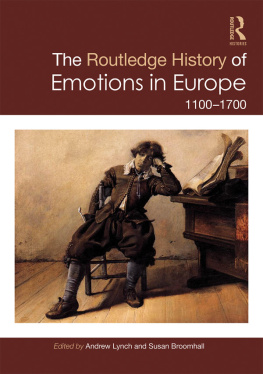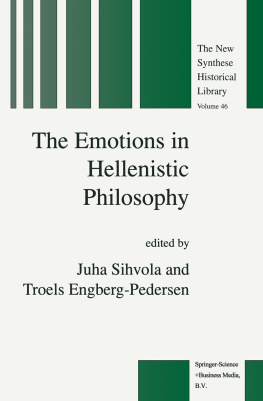
Series page
What is History? series
- John H. Arnold, What is Medieval History?
- Peter Burke, What is Cultural History? 2nd edition
- Peter Burke, What is the History of Knowledge?
- John C. Burnham, What is Medical History?
- Pamela Kyle Crossley, What is Global History?
- Pero Gaglo Dagbovie, What is African American History?
- Shane Ewen, What is Urban History?
- Christiane Harzig and Dirk Hoerder, with Donna Gabaccia, What is Migration History?
- J. Donald Hughes, What is Environmental History? 2nd edition
- Andrew Leach, What is Architectural History?
- Stephen Morillo with Michael F. Pavkovic, What is Military History? 3rd edition
- James Raven, What is the History of the Book?
- Sonya O. Rose, What is Gender History?
- Brenda E. Stevenson, What is Slavery?
- Jeffrey Weeks, What is Sexual History?
- Richard Whatmore, What is Intellectual History?
Copyright page
Copyright Barbara H. Rosenwein and Riccardo Cristiani 2018
The right of Barbara H. Rosenwein and Riccardo Cristiani to be identified as Authors of this Work has been asserted in accordance with the UK Copyright, Designs and Patents Act 1988.
First published in 2018 by Polity Press
Polity Press
65 Bridge Street
Cambridge CB2 1UR, UK
Polity Press
101 Station Landing
Suite 300
Medford, MA 02155, USA
All rights reserved. Except for the quotation of short passages for the purpose of criticism and review, no part of this publication may be reproduced, stored in a retrieval system or transmitted, in any form or by any means, electronic, mechanical, photocopying, recording or otherwise, without the prior permission of the publisher.
ISBN-13: 978-1-5095-0849-5 (hardback)
ISBN-13: 978-1-5095-0850-1 (paperback)
A catalogue record for this book is available from the British Library.
Typeset in 10.5 on 12 pt Sabon by Toppan Best-set Premedia Limited
Printed and bound in the UK by CPI Group (UK) Ltd, Croydon
The publisher has used its best endeavors to ensure that the URLs for external websites referred to in this book are correct and active at the time of going to press. However, the publisher has no responsibility for the websites and can make no guarantee that a site will remain live or that the content is or will remain appropriate.
Every effort has been made to trace all copyright holders, but if any have been inadvertently overlooked the publisher will be pleased to include any necessary credits in any subsequent reprint or edition.
For further information on Polity, visit our website:
politybooks.com
Dedication
For Joshua and Julian
In ricordo di Chiara Zevi
Preface and Acknowledgments
We began to think about writing this book while working on Generations of Feeling together. Although the history of emotions has flourished in the last several decades, it is open to a wide variety of assumptions, expectations, and approaches. In many ways, it is still finding itself. We hope that this book will make following its many paths a bit easier. Writing it certainly helped us to see many unexpected coherencies and patterns.
While preparing this book, we have incurred many debts. We warmly thank Damien Boquet, Lynn Hunt, and Jan Plamper, whose comments and critiques on earlier drafts gave us welcome advice. Lale Behzadi, Maaike van Berkel, Anthony Cardoza, Nicole Eustace, Timothy Gilfoyle, and Kyle Roberts helped with important sections. We are grateful to Fay Bound Alberti, Paolo Arcangeli, James Averill, Thomas Dixon, John Donoghue, Stephanie Downes, Ute Frevert, Erik Goosmann, Bernard Rim, Lyndal Roper, and Tom Rosenwein. A teaching engagement at the University of Reykjavik allowed Barbara to try out some of the materials that are discussed in . She thanks the participants and organizers, especially Torfi H. Tulinius and Sigurur Gylfi Magnsson. Finally, we thank our editor at Polity Press, Pascal Porcheron, and the Press's anonymous readers, who commented with care and intelligence on an earlier draft.
Barbara H. Rosenwein and Riccardo Cristiani
Sanremo, March 2017
Introduction
Is it really possible to tell someone else what one feels?
Leo Tolstoy, Anna Karenina
I understand a fury in your words. But not your words.
William Shakespeare, Othello, Act 4, Scene 2
When Othello walks into his wife's bedroom, it is the way that he speaks, not his words, that she understands. Let me see your eyes, he says. Look in my face. Spoken tenderly, these could have been a lover's request. Desdemona knows better. She understands that behind them is a fury, though she does not grasp its source. Othello begins to cry. Alas the heavy day, why do you weep? asks his wife.
These are the words of characters in a play written some four hundred years ago. They tell us some of the complex ways in which Shakespeare understood emotions and their expression. That we can still be moved by this scene means that we can be sympathetic to the emotional burdens of its protagonists. But are they our emotional burdens? And would we express them the same way? The history of emotions is dedicated to answering such questions. It studies the emotions that were felt and expressed in the past; it looks at what has changed and what ties together their past and present.
In the last twenty-five years or so, emotions have become a kind of obsession in our culture. Now everyone novelists, journalists, psychologists, neuropsychologists, philosophers, and sociologists thinks and writes about emotions, each for his or her own purposes, each taking a different direction. Historians are no exception. While united in the goal of understanding the past of emotions, they have pursued it in a bewildering variety of ways. Anyone interested in the history of emotions whether student, researcher, or simply curious reader will find the terrain difficult without a map. That is what this book provides. It introduces the main avenues of modern research on emotions, starting with the psychological sciences, continuing with the various schools of historical thought on the topic, adding trends in current studies, and ending with a glimpse of the future. Much like a Google map, it suggests a variety of possible approaches so that readers may pursue their own historical inquiries. It is not the first book to survey the field, but it is the first to do so as both a short introduction and a guide to fledgling researchers.
The history of emotions relies on some sort of conception of what an emotion is. This is more problematic than it seems at first glance. How do we know ironic as it may seem that an emotion is an emotion? We know (or think we know) the answer. How do you feel about that? ask our relatives, spouses, friends, our therapist, or a TV reporter. Happy, or angry, we say, or we burst into tears, or our hearts beat faster. But how exactly are those words, tears, and beating hearts signs of emotions, or emotions themselves? What makes those words, gestures, and the concepts they embrace emotions? Are we born with them? Or do we learn them? Are they rational or irrational? Do we really know how we feel, or might it be better to say that emotions involve something beyond our knowledge?
Next page














